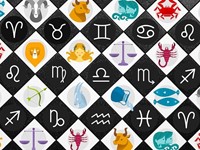This impressive image of galaxy NGC 3627 includes data from three space-based telescopes! Hubble's visible light data are shown in red, green and blue, while NASA's Chandra XRay Observatory contributes X-ray data (purple) and the James Webb space telescope contributes infrared data (red, green and blue).
NGC 3627 is located about 36 million light-years from Earth. It is classified as a barred spiral galaxy due to the rectangular shape of its central region.
Chandra's X-ray observations reveal evidence of a supermassive black hole at the centre of the galaxy and other dense objects such as neutron stars: ultra-dense stellar cores that collapse when massive stars run out of fuel.
Today marks the 25th anniversary of Chandra's mission, which with its valuable X-ray data has discovered some of the most exotic environments in our universe and helped scientists understand the structure and evolution of the cosmos.
Together with observatories like Webb and Hubble, Chandra's X-ray observations give us a broader view of space across the electromagnetic spectrum.
Image description:
A hazy view of the spiral galaxy NGC 3627. The galaxy is seen at an angle tilted from top left to bottom right. Since most of its face is facing towards us, its spiral arms of red and purple dots can be clearly identified. A few bright white dots surrounded by neon purple are scattered throughout the galaxy. At the core of the galaxy, at the point where the spiral arms meet, a large white and purple glow detected by Chandra indicates the presence of a supermassive black hole.


 Nielawore
Nielawore









Yorumlar
büyüleyici
Yorum yazmak için lütfen giriş yapınız